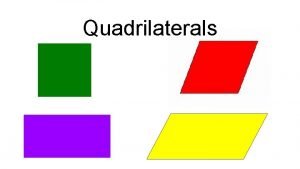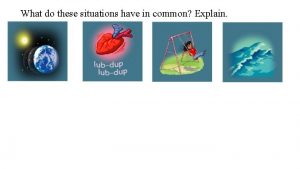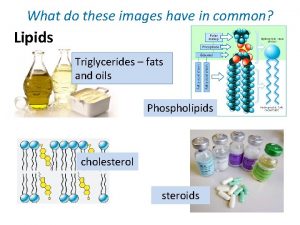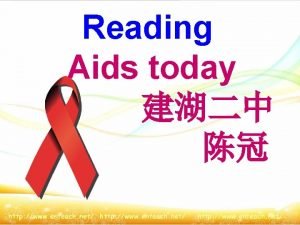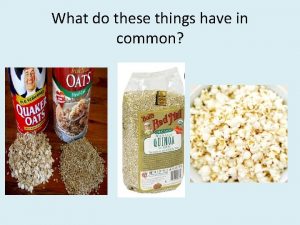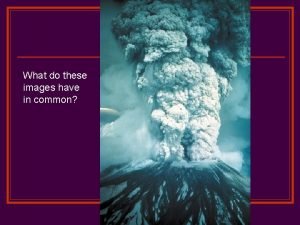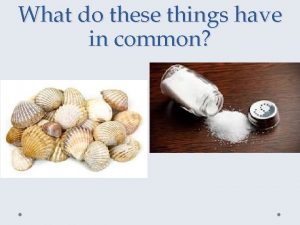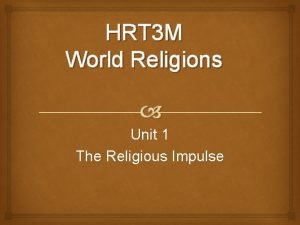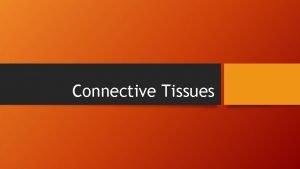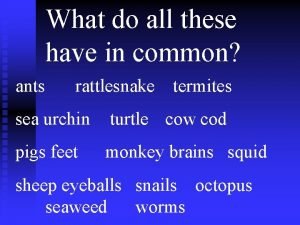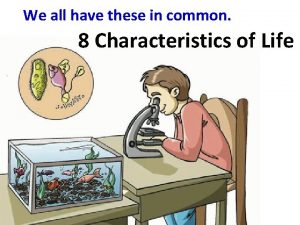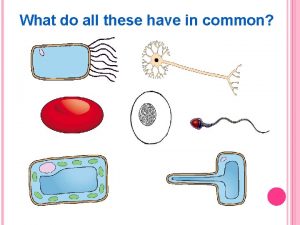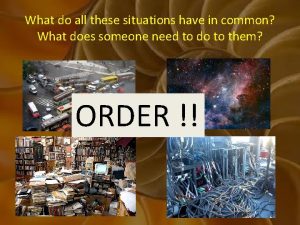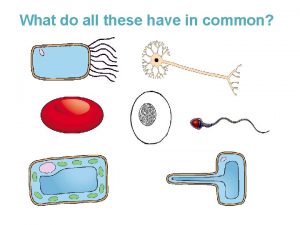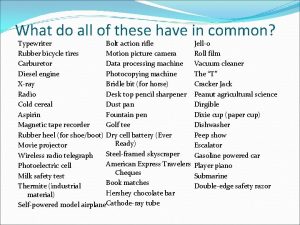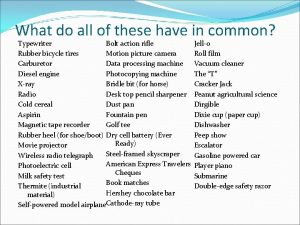What do all of these have in common

















- Slides: 17

What do all of these have in common?

They all contain natural products… Natural Products Drug Discovery Searching for Cures in the Plant Kingdom

Primary Metabolites • Molecules that are necessary for survival of organism • lipids, nucleic acids, proteins, polysaccharides

Secondary Metabolites • Not essential to the survival of the organism • May give the organism a selective advantage • Limited distribution in nature • Also called Natural Products • Show bioactivity– the ability to inhibit the growth of microbes taxol

Most natural products have been found in plants, fungi and bacteria


Step 1: Extraction • Extracts contain all of the compounds in the cell • HOW? Add a solvent to the plant sample. • Solvents can be either polar or nonpolar

Choices, choices… which solvent to use? • The solvent is chosen based on the properties of the molecule you want to extract • Most bioactive compounds are POLAR.

How a solvent works • Solvent breaks the cell membrane open. • “Like dissolves like” – the polar solvent draws out the polar compounds into solution • The smaller the pieces, the greater the surface area available for the solvent to work on the cells.

Step 2: Microbial Bioassay • Are the compounds in the extract bioactive? – Bioactive = able to inhibit the growth of microbes • Test the extract on E. coli (prokaryote) & S. cerevisiae (eukaryote) – see if extract can inhibit growth

Prokaryotes vs. Eukaryotes Prokaryotes Eukaryotes

Microbial Assay • Microbe is plated onto agar plate • Sterile Discs are dipped into extract

Microbial Assay • Discs are placed on the plate

Microbial Assay: Controls • Positive Control = Iodine • Negative Control = Solvent only

Negative Control Extract Disc 1 Positive Control Extract Disc 2

Zones of Inhibition • If an extract is bioactive, it causes a halo to form around the disc (prevents growth) • The size of the halo (the zone of inhibition) indicates how effective an extract is as an antimicrobial agent.

Original source of natural product How are Natural Products discovered? 10 -15 yrs. $83 million Extracts prepared Biological testing (Bioassay) Fractionation and Purification of active compound(s) Determination of the Chemical Structure Pre-clinical testing (pre-human testing) Human clinical trials FDA Approval
 What do all of these pictures have in common
What do all of these pictures have in common What do these shapes have in common
What do these shapes have in common What is the common situation in all these images
What is the common situation in all these images What do these pictures have in common
What do these pictures have in common All these pictures
All these pictures What do these people have in common
What do these people have in common Ester bond in fatty acids
Ester bond in fatty acids What do these pictures have in common
What do these pictures have in common What do these pictures have in common
What do these pictures have in common What do these people have in common
What do these people have in common Grain kernal
Grain kernal What do these images have in common
What do these images have in common Who is he
Who is he What do these 3 things have in common questions
What do these 3 things have in common questions Wave 1
Wave 1 Symbol definition
Symbol definition What do all religions have in common
What do all religions have in common What do all connective tissues have in common
What do all connective tissues have in common

